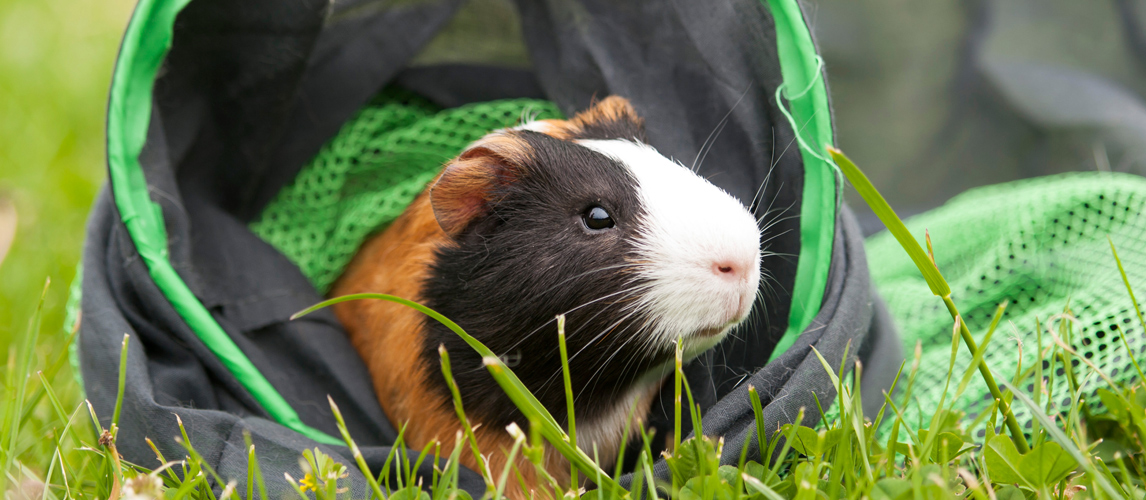
The Best Hay for Guinea Pigs in 2022
- Home
- Other animals
- Small Animals
Guinea pigs are herbivores who require plenty of hay and water to be healthy. And while fresh vegetables and quality guinea pig commercial foods are always welcome, the most important part of a guinea pig’s diet is fresh hay. The problem is, finding the best hay for guinea pigs can be challenging. There are many different types of hays and pet brands to choose from, making the selection overwhelming for an average consumer. Luckily, you’re in the right place – in this article, we talk about the nutritional needs of guinea pigs, including why they should be fed hay on a daily basis. We also outline our favorite products, including the best value pick and premium pick.
The Best Hay for Guinea Pigs
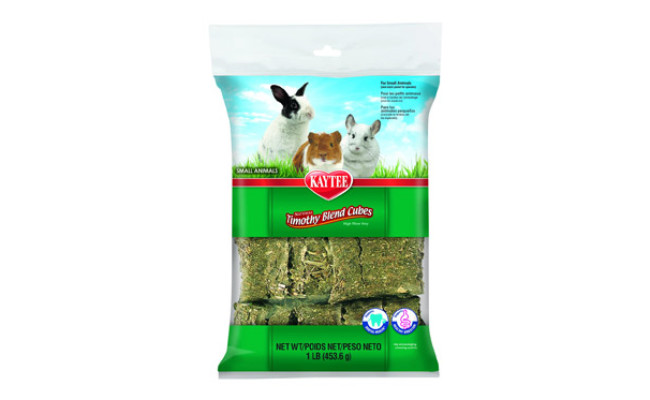
Timothy hay should be the staple of your guinea pig’s diet and Kaytee’s Natural Blend is one of the best products on the market as it provides excellent nutrition at a very reasonable price. The product comes in compressed blocks of sun-cured timothy hay and sun-cured alfalafa hay, making it ideal for all guinea pigs, especially those who need slightly richer nutrition. The blend is lower in protein and calcium but super-high in fiber, so it supports both urinary health and digestive health. Also, it’s fantastic for your pet’s teeth and gums!
The treats complement any Kaytee fortified food (or any other brand) and provide nutritional variety guinea pigs crave. The product is grown in the USA and is 100% natural, free from artificial additives.
Crude protein: 10%
Crude fat: 1%
Crude fiber: 30%
Moisture: 12%
Ingredients: sun-cured timothy hay, sun-cured alfalfa hay
- Brand: Kaytee
- Model: 100032126
- Weight: 1 pounds
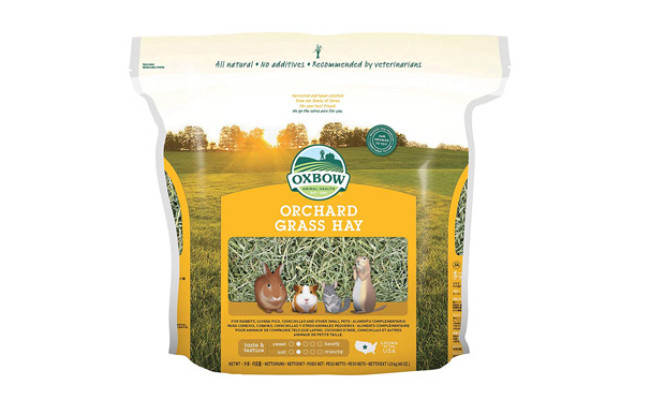
Nutritious, sweet-smelling and appetizing, Oxbow’s Orchard Grass is perfect for adding some healthy variety to your pet’s diet. This grass hay for guinea pigs is very rich in fiber which helps support healthy digestion and keep teeth trim and strong. Thanks to its soft texture, it’s also great for foraging and mental stimulation – absolutely necessary for the well-being of guinea pigs! Because the hay is high in fiber and low in protein, you can feed it in unlimited amounts as an alternative to timothy hay, or mix it with other hays to create a sweet and healthy combination.
The Oxbow Orchard Grass is harvested from the USA farms, hand-sorted and hand-packed. Needless to say, it’s completely natural and free from all artificial additives!
Crude protein: 7%
Crude fat: 1.5%
Crude fiber: 32%
Moisture: 15%
Ingredients: 100% Orchard Grass
- Brand: Oxbow
- Model: 448012
- Weight: 1.24 pounds
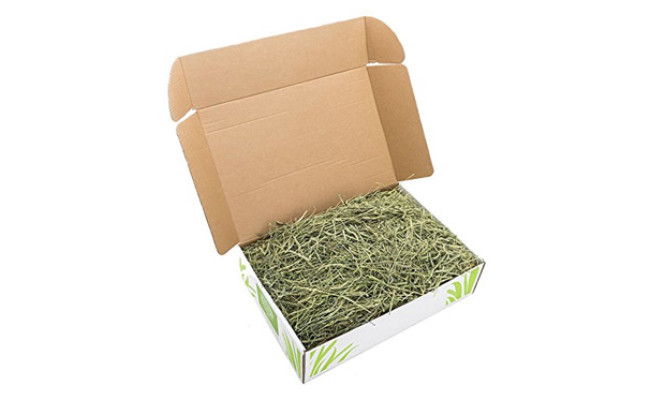
With just the right amount of protein and fiber, your guinea pig is guaranteed to thrive on Second Cut Timothy Hay by Small Pet Select. This high-quality fresh hay consists of leaves, seed heads and stems, and is beautifully green and sweet-tasting, providing plenty of variety and flavor for even for the pickiest of pets. Because this is the 2nd cutting (what’s usually called the “perfect blend”), the hay has a soft texture, so it makes for a nice guinea pig hay house. It’s also pretty high in fiber, so ideal for digestive and dental health.
The product is hand packaged in high-strength boxes in small batches, so quality and freshness are guaranteed. This is natural hay, with no additives of any kind.
Crude protein: standard
Crude fat: standard
Crude fiber: standard
Ingredients: 100% timothy hay
- Brand: Small Pet Select
- Model: TIMOTHYHAY-010
- Weight: 10 pounds
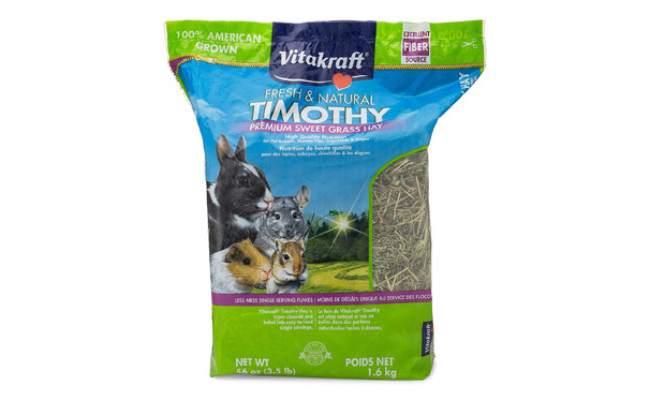
If you’re looking for the best timothy hay for guinea pigs on a budget, check out Vitakraft Premium Sweet Grass Hay. It’s green, fresh and soft, high in fiber and low in protein, providing optimal nutrition for guinea pigs. Because it contains 30% of fiber, it helps support digestion and good dental hygiene, keeping the teeth trim and healthy. As a bonus, the product is hand selected and harvested for the best leaf and stem quality.
This guinea pig food is grown in the USA and packaged into compressed mini bales for easy feeding and maintenance. It’s 100% natural, free from artificial colors, preservatives and pesticides.
Crude protein: 8%
Crude fat: 1.5%
Crude fiber: 30%
Moisture: 14%
Ingredients: sun-cured timothy hay
- Brand: Vitakraft
- Model: 34544
- Weight: 3.5 pounds
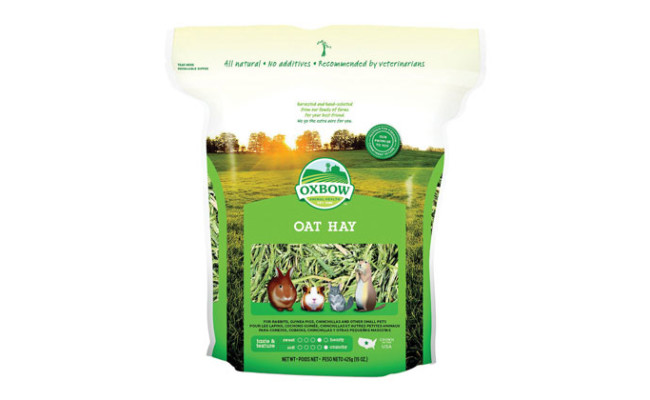
Made from 100% oat grass hay, this pet guinea pig food is nutritious, savory and full of sweet aroma. It includes both leaf and stem, so it’s fibrous and crunchy, perfect for digestive health and trim teeth. Low in protein and high in fiber, the food provides a wonderful supplement to any guinea pig’s timothy hay diet. Because the hay is harvested at the ideal state of maturity (before the oat develops into a seed), it mimics the animal’s natural habitat and encourages foraging and mental stimulation, which is always a plus.
The Oxbow Oat Hay is grown in the USA and is completely natural, free from all pesticides and artificial preservatives, making it a perfect diet for all guinea pigs.
Crude protein: 7%
Crude fat: 1.5%
Crude fiber: 32%
Moisture: 15%
Ingredients: oat hay
- Brand: Oxbow
- Model: 1011030150
- Weight: 8 ounces
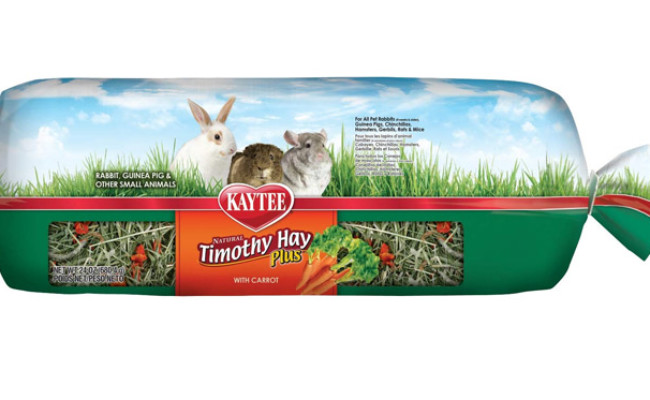
Combining the benefits of timothy hay with the crunchy texture of carrots, the Kaytee Timothy Hay Plus provides everything a guinea pig needs, and then some. Super-high in fiber and very low in protein and calcium, the hay checks all the right boxes: it supports digestive, dental and urinary health. This makes it ideal for your guinea pig’s everyday food, but you can also mix it with other types of hay for variety, especially other Kaytee’s fortified foods.
This is hand-selected hay that ensures the proper ratio of stem to leaf, making it fantastic for both eating and foraging. It’s also completely natural, free from any and all artificial additives.
Crude protein: 4.5%
Crude fat: 0.5%
Crude fiber: 28%
Moisture: 12%
Ingredients: natural sun-cured timothy hay, dried carrots
- Brand: Kaytee
- Model: 100502648
- Weight: 1.7 pounds
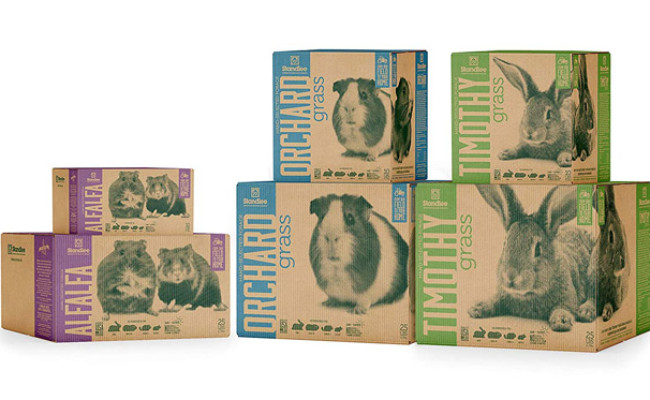
One of the best simple and natural timothy hay for guinea pigs on the market, Standlee Premium Western Forage Timothy Grass is super-high in fiber but low in protein. Thanks to its rich fiber content, it stimulates chewing, promoting dental and digestive health, while its long stems encourage your pet’s natural foraging instincts. To provide maximum quality, this hay is always hand-selected, fresh and green. As a bonus, it comes with a resealable bag that keeps that freshness for a long time.
The Standlee hay is grown in the USA and sun-cured for optimal moisture levels. It’s also 100% natural, free all types of artificial additives, so all-around great hay!
Crude protein: 8%
Crude fat: 1.5%
Crude fiber: 35%
Moisture: 12%
Ingredients: naturally sun-cured premium western timothy grass forage
- Brand: Standlee Hay Company
- Model: 1200-71110-0-0
- Weight: 11.4 pounds
Best Hay for Guinea Pigs Buying Guide
Guinea pigs need plenty of roughage to chew on a daily basis to be healthy and happy. Hay is perfect for this as it’s exactly the type of food that guinea pigs eat in the wild – it’s nutritious, high in fiber and perfect for foraging. But finding the best hay for guinea pigs can be difficult as there are many different brands and types of hay to choose from. To help you find the right product for your pet, we’ve put together this buying guide in which we cover everything you need to know about guinea pig’s nutrition, including why they need hay, how much they need it daily and more.
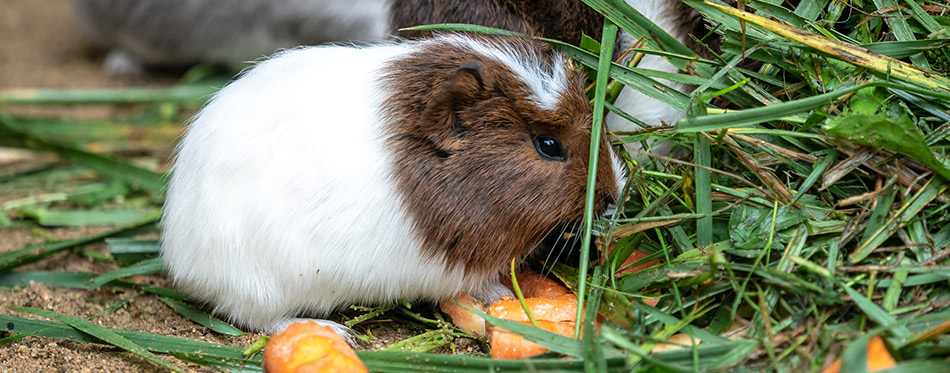
What to Look for in Hay For Guinea Pigs
Besides clean and fresh water, veggies and fruits, all guinea pigs need plenty of hay in their diet. In fact, fresh hay should take up about 80% of your pet’s diet. But what is the best hay for guinea pigs to eat?
In general, all guinea pigs do very well on timothy hay as it contains an optimal ratio of fiber to protein as well as a low amount of calcium. That said, feeding only one type of hay gets boring really quickly. Like all animals, guinea pigs thrive on variety, so mix it up whenever you can. Along with timothy hay, other low-calcium hays like orchard grass and oat hay are very welcome in a guinea pig’s diet as they too are rich in fiber and low in protein. As for legume hays, they’re higher in protein and calcium than other hays, so they can be fed only occasionally to adult guinea pigs. They’re best suitable for pregnant and lactating females though, as they have higher needs for calcium and protein.
When looking for the best hay for guinea pigs, pay attention to the following things:
- Where the hay was grown: you want hay from the USA, ideally from small family farms.
- Whether it’s 100% natural: it should contain no pesticides or artificial additives.
- The brand: don’t buy hay from unknown, suspiciously cheap brands who cannot guarantee safety or freshness.
- The cut: choose first cut hay only if you want a coarser and very high in fiber hay, and second or third cut if you want softer, more nutritious and palatable hay.
Why You Should Feed Your Guinea Pig Hay
Hay is a staple in a guinea pig’s diet as it provides all the essential nutrients they need to be healthy and happy. It’s crucial for healthy digestion, as well as for trim teeth, and it’s also a perfect way to encourage your piggy’s natural foraging instincts. You should provide unlimited access to fresh hay every day and ensure there is a variety in your pet’s diet.
- Rich in fiber
Fiber is vital for guinea pigs’ digestion as it helps maintain a balanced bacterial flora in the gut. Fiber also helps stimulate gastrointestinal motility, a.k.a., helps your piggy poop normally. Fiber is also essential for guinea pigs’ dental health as it helps wear down their teeth, keeping them trim. As you probably know, all guinea pigs – wild and domesticated – have teeth that grow continuously and it’s important to keep them nice and short so they don’t get painful mouth sores.
- Source of nutrients
Besides fiber, which is essential for guinea pigs’ health, hay also contains protein and fat, both of which are important for a balanced, healthy diet. Hay contains other nutrients as well, including calcium, phosphorus, Vitamin C and more, although the amount of other nutrients hay can contain depends on its type and freshness.
- Encourages foraging instincts
Wild guinea pigs spend most of their life foraging on natural herbs and grasses. This is a natural instinct that our domestic guinea pigs also have and it’s a behavior that should be encouraged and supported as it’s important for their well-being. Providing your pet with some hay to burrow is a great way to stimulate its nesting and foraging behavior. As a bonus, hay acts as a natural bedding material for young piggies.
- Provides variety
Like all animals, your guinea pig thrives on a varied diet. Feeding your piggy pellets and fresh veggies is always a good idea, but providing hay is even more important as it’s a vital part of a well-rounded, healthy diet. Timothy hay is the best option but other low-calcium hays are also great additions.
Types of Hay for Guinea Pigs
There are many different hays that a guinea pig can eat, but when it comes to bare basics, there are only two types: grass hay and legume hay. Let’s talk about each kind and their varieties so you can decide what hay is the best for your pet.
Grass Hay
Grass hay should make a staple of your guinea pig’s diet as it contains high amounts of fiber and low amounts of protein. The right balance of these macronutrients is important because too much protein can overwhelm your pet’s kidneys, while too little fiber can lead to digestive issues. There are many varieties of grass hay that you can feed your piggy, including:
- Timothy hay
- Orchard hay
- Oat hay
- Barley hay, and more
Out of all grass hays, timothy hay is the most popular type as it contains the ideal balance of nutrients: it’s high in fiber and low in protein, calcium and calories. It’s also pleasantly aromatic and palatable. Indeed, timothy hay is the best kind of hay for all guinea pigs. That said, oat hay, orchard hay and other low-calcium hays are also excellent and can add variety to your piggy’s diet.
Legume Hay
Legume hays are quite high in protein and calcium and are lower in fiber than grass hays. They’re also higher in calories, which can be a huge minus for overweight piggies. Because this type of hay doesn’t provide the optimal balance of nutrients, it shouldn’t be fed every day but only occasionally, or mixed (in very small amounts) with timothy hay more regularly. Popular varieties include:
- Alfalfa hay
- Clover hay
While not ideal for everyday consumption for adult guinea pigs, legume hays are perfect for pregnant and lactating females as they require more calcium and protein. Young piggies can also benefit from the extra protein in their diet as it helps them grow, as well as extra calcium because it’s good for their bones. Likewise, recovering guinea pigs (whether from an injury or illness) may also benefit from legume hays because they’re higher in nutrients and calories.
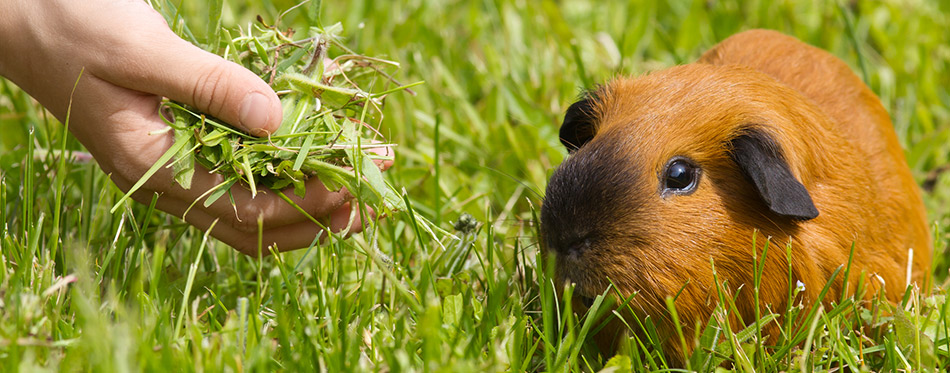
Best Hay for Guinea Pigs FAQ:
Q: How much timothy hay should I give my pet?
A: Timothy hay should make up the bulk of your guinea pig’s diet. And while there is no exact number of grams or calories your should feed your pet – some vets recommend that timothy hay should comprise at least 10% of your piggy’s diet, while others recommend a much larger percentage – it’s safe to say that you should provide an unlimited amount of timothy hay. Basically, give as much as your pet will eat!
Q: How often should I give my guinea pig timothy hay?
A: Because timothy hay has an ideal balance of nutrients for guinea pigs, it’s wise to make sure your piggy has access to it at all times. Just make sure it’s fresh (green in color), high-quality timothy hay!
Q: What is the difference between “first cut” and “second cut” hay?
A: You’ve probably noticed that some hay packages come with “first cut” label, while others come with “second cut” label. What is the difference?
- First cut hay is harvested (cut) for the first time around May or June. It’s coarse in texture, high in fiber and low in protein, and it contains larger seed heads which guinea pigs love. While pretty good in nutrition, it’s not ideal as these seed heads have a much lower nutritional value than stems. Also, piggies tend to prefer softer, more palatable hay.
- Second cut hay is the hay that the farmers let regrow after the first cut. It’s usually harvested in late summer. This is the ideal hay for guinea pigs because it’s high in fiber, low in protein and soft in texture. It’s also leafier than the first cutting and it contains fewer seed heads, which allows piggies to focus their attention on the fibrous stems.
There is also third cut hay, which is harder to come by. This type of hay is soft, tender and delicious, however, it’s not particularly healthy as it’s lower in fiber and higher in protein than first and second cut hays.
Related Posts

